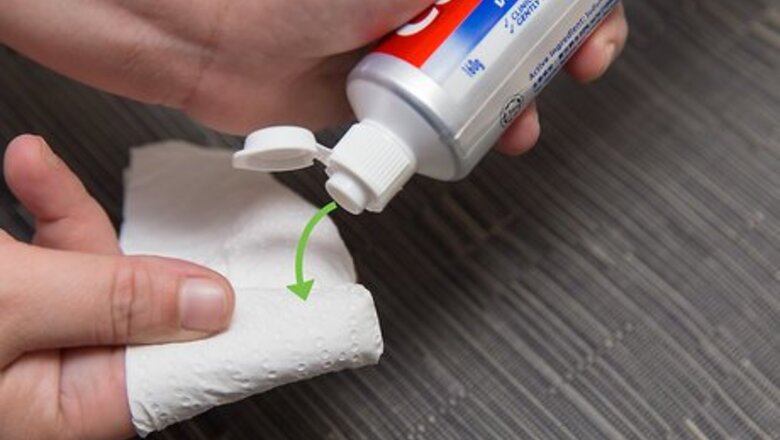
views
Finding Alternatives to a Toothbrush
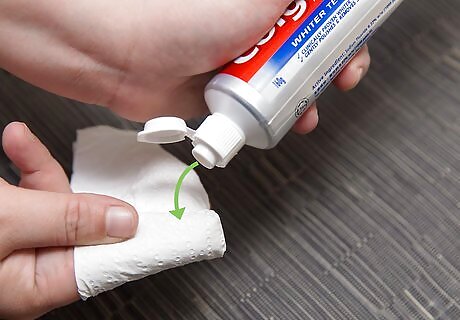
Use a washcloth or paper towel. A rough washcloth will do a better job of cleaning, but a paper towel will do if a washcloth is not available. Wrap the washcloth or paper towel around your index finger, dampen it, and add toothpaste if you have some. Brush your teeth as if using a toothbrush: begin at the gums and work down, cleaning each individual tooth with a circular motion. Don’t forget to brush your tongue. Rinse your mouth thoroughly when done, swishing back and forth.
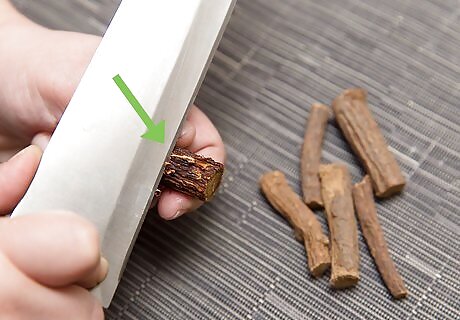
Find a twig. Before there were toothbrushes, most people brushed their teeth with twigs. In many parts of the world, they still do, using twigs from oak, arak, or neem trees. Research shows that twigs from the arak tree contain natural fluoride and antimicrobial agents, and brushing with them is as or more effective as brushing with a toothbrush and toothpaste. Pick a young, flexible branch about 6 to 8 inches long (15 to 20 cm). You want one without real bark, only a thin skin. Peel the skin off and chew on one end of the stick until the fibers separate, turning the end into a little brush. Use it to brush your teeth. You can also use a toothpick to clean between teeth, but use caution so as not to hurt your gums and make them bleed.
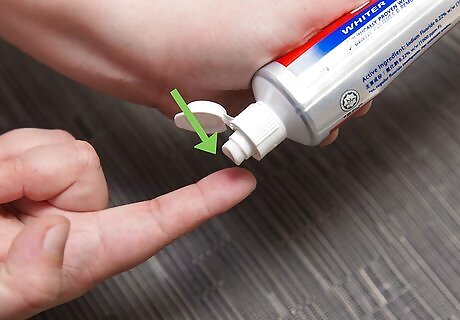
Make do with your finger. If no paper towels, washcloths, or twigs are at hand, you can always use your finger. Be sure to wash your hands very well first, then use your index finger as you would a toothbrush: begin at the gums and work down for the upper arch and work up for the lower arch, cleaning each individual tooth with a circular motion. Be sure to rinse your finger before moving from your top to bottom teeth, and from the front to the back of your teeth. Rinse your mouth thoroughly when done, swishing back and forth and from one cheek to another for at least 30 seconds.
Cleaning Your Teeth without Brushing
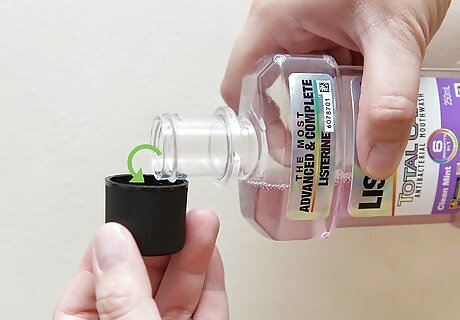
Rinse with mouthwash. While mouthwashes should not be used as an alternative to brushing and flossing, they have been shown to kill microbes in the mouth and inhibit plaque formation. Put some in your mouth and swish it around for a minute to clean your teeth. If you're using a Listerine mouthwash, dilute it with water at a 1:1 ratio.
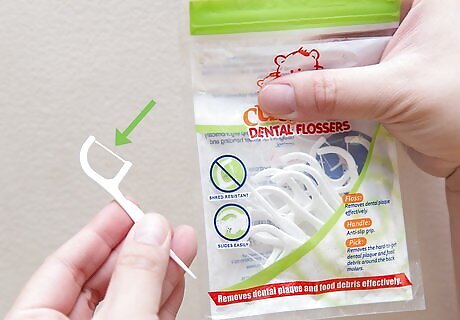
Use floss to clean your teeth. If you forgot your toothbrush but remembered floss, then you’re in luck. Many dentists believe that flossing alone is more beneficial than brushing alone in fighting tooth decay. Floss helps remove bacteria and food between your teeth and around your gums. Rinse your mouth thoroughly afterwards for a more complete clean. Flossing leads to better blood flow in the gums in order to create an antibacterial barrier of protection surrounding your tooth
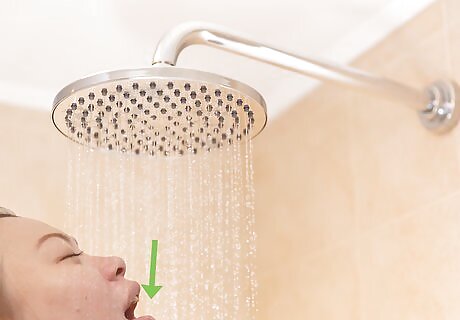
Clean your mouth in the shower. Open your mouth and let warm water stream over your teeth. The shower will act like a water pick system, helping to rinse out your mouth and flush away plaque. Combine this with brushing with your finger for a more thorough cleaning.
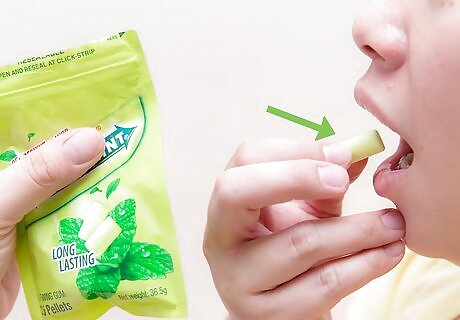
Chew gum to clean your teeth. Chewing sugar-free gum has been shown to be as effective as flossing in removing food particles, plaque, and bacteria from teeth. It also freshens your breath. The optimal length of time to chew is one minute, after which bacteria begin to be released back into the mouth from the gum. Chewing sugar-free gum can also create the optimal balance of the salivary pH which disables the bacterial formation.
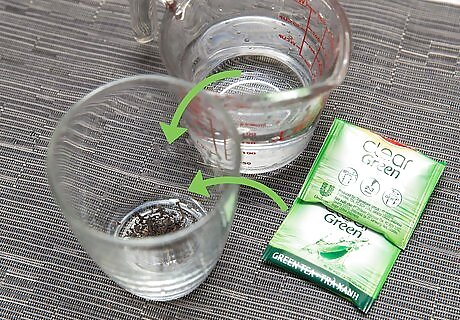
Drink or rinse your mouth with green teas. Green tea contains polyphenol antioxidant compounds that reduce plaque and fight gum disease. Simply drink the tea, or for a deeper clean, use it as you would mouthwash.
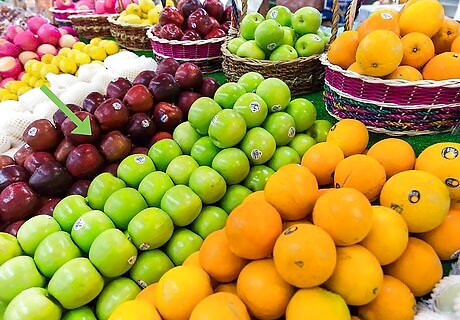
Eat fruits and vegetables that clean your teeth. The abrasive nature of fibrous vegetables can help to clean your teeth, while the vitamins and acids they contain have benefits for whitening teeth and fighting cavities. Apples – Apples contain vitamin C, which is necessary for health gums, as well as malic acid, which helps to whiten teeth. Carrots – Carrots are rich in vitamin A, which strengthens tooth enamel. The fibers in carrots can act as micro-bristles on the tooth surface and also in between your teeth, creating a natural massage of your gums. Celery – Chewing celery produces a lot of saliva, which helps to neutralize the acids that cause cavities.
Using Alternatives to Toothpaste
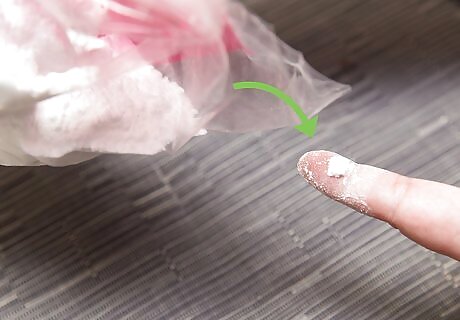
Substitute baking soda for toothpaste. If you forgot your toothpaste as well as your toothbrush, you can use baking soda as a substitute. It is an ingredient in many toothpastes because of its ability to whiten teeth and remove plaque. Simply place some on your finger, paper towel, or washcloth before brushing your teeth.

Try a mixture of salt and water. Salt has natural antibacterial qualities and can eliminate some of the plaque-causing germs in your mouth when you don’t have any toothpaste. Combine 1–2 teaspoons of salt to 8 ounces of lukewarm water and allow the salt to dissolve in the water. Then dip your finger, paper towel, or washcloth in the saltwater before brushing your teeth. You can also use the salt water to rinse your mouth out after brushing. Don’t use too much salt or use this method frequently if you have metal fillings, as salt is corrosive.
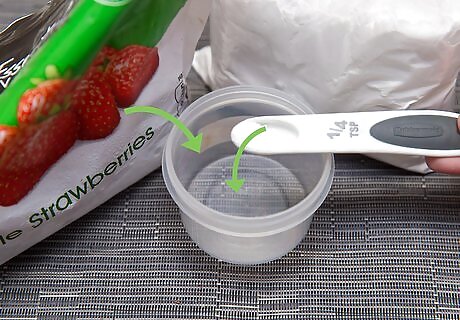
Make a toothpaste with strawberries. Strawberries contain vitamin C to maintain gum health, a powerful astringent that helps remove plaque, and malic acid which whitens teeth. Alone or combined with baking soda, crushed strawberries are a good substitute for toothpaste. Be sure to rinse thoroughly after brushing, as strawberries also contain sugar, which can contribute to tooth decay. Be aware that strawberries contain fructose. This is less dangerous to your teeth than sugar, but may still contribute to some decay. Check with your dentist before starting to use a homemade strawberry toothpaste.

















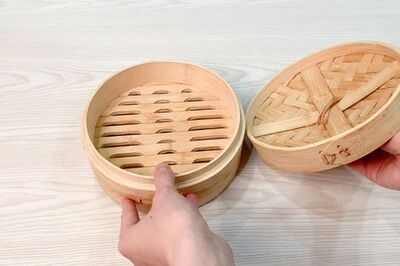
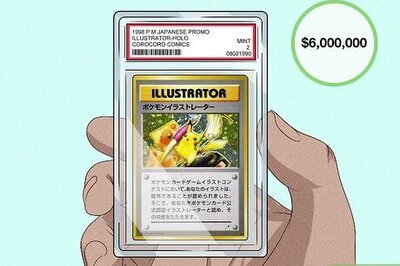
Comments
0 comment